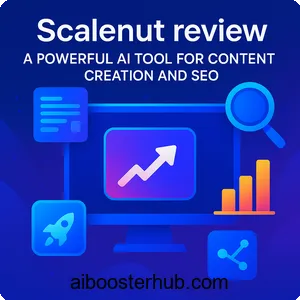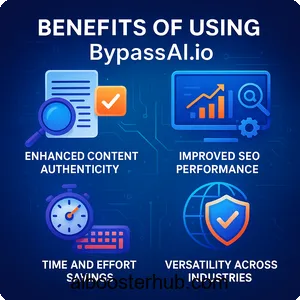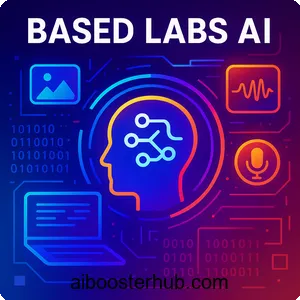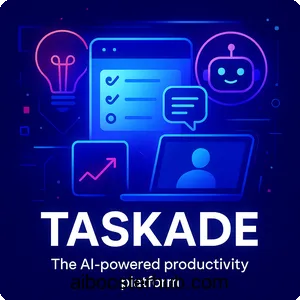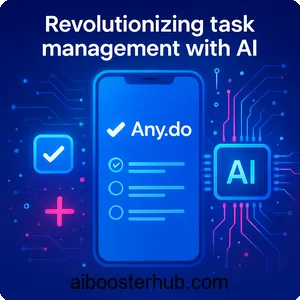Pipedream: Revolutionizing AI workflow automation
Pipedream is a powerful platform that empowers developers and businesses to streamline workflows by connecting APIs, AI, databases, and more. This article dives deep into Pipedream’s features, use cases, benefits, and practical steps for leveraging its capabilities to enhance automation and integration in AI-driven projects.
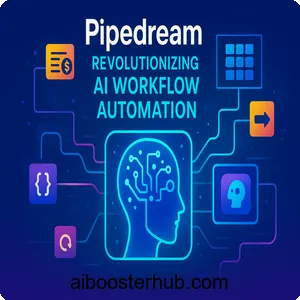
Content
Toggle1. Introduction to Pipedream
Pipedream is a dynamic integration and automation platform designed to simplify the process of connecting APIs, AI services, databases, and other tools to create seamless workflows. Tailored for developers, it offers a unique blend of code-level control and no-code options, making it a versatile choice for building powerful applications. Whether you’re automating complex business processes or integrating AI tools into your tech stack, Pipedream provides a serverless environment that eliminates infrastructure management hassles. With over 2,500 pre-built integrations and support for multiple programming languages, it’s no wonder that more than 1 million developers, from startups to Fortune 500 companies, rely on Pipedream to process billions of events. This section explores what makes Pipedream a standout platform for AI enthusiasts and developers alike.
What is Pipedream?
Pipedream connects APIs, AI models, and databases, enabling developers to create efficient workflows. Unlike traditional automation tools, Pipedream stands out by offering both low-code and code-based solutions, allowing users to write custom logic in languages like Node.js, Python, Go, and Bash. Its serverless architecture means you can deploy workflows instantly without worrying about managing servers, making it ideal for rapid prototyping and production-grade applications. The platform’s ability to handle real-time event processing and its extensive library of pre-built components make it a go-to choice for AI-driven automation.
Why Pipedream matters for AI development
For those working in artificial intelligence, Pipedream is a game-changer. It allows seamless integration of AI services, such as OpenAI’s ChatGPT or other machine learning models, into workflows that connect with other tools like Slack, Google Sheets, or custom APIs. Developers can build intelligent systems using AI for data processing, content generation, or decision-making. By providing managed authentication and real-time observability, Pipedream ensures that AI integrations are secure, scalable, and easy to monitor, making it an essential tool for modern AI development.
2. Key features of Pipedream
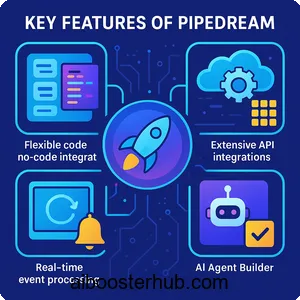
Pipedream’s robust feature set is what makes it a preferred platform for developers looking to integrate AI and other services. Its combination of flexibility, scalability, and developer-friendly tools ensures that it caters to a wide range of automation needs. Below, we explore the core features that make Pipedream a powerhouse for AI workflow automation.
Flexible code and no-code integration
One of Pipedream’s standout features is its dual approach to workflow creation. Developers can write custom code in Node.js, Python, Go, or Bash to implement complex logic, while non-technical users can leverage no-code options to build workflows using pre-built components. For AI, integrate machine learning models with custom scripts or connect AI APIs using pre-configured actions. This flexibility ensures that Pipedream is accessible to both seasoned programmers and those new to automation.
Extensive API integrations
Pipedream boasts over 2,500 pre-built API integrations, covering popular services like Slack, Discord, Google Suite, and AI platforms like OpenAI. These integrations come with managed authentication, including OAuth and API key management, which simplifies the process of connecting services. AI developers can link models to data sources or tools like Slack for AI-generated responses or database-driven training.
Real-time event processing
Pipedream excels at handling event-driven workflows, allowing real-time responses to triggers like webhooks, HTTP requests, or scheduled events. AI applications benefit from real-time processing for tasks like sentiment analysis or AI-generated notifications. The platform’s real-time observability tools provide detailed insights into workflow performance, errors, and execution times, ensuring that AI-driven processes run smoothly.
AI Agent Builder
Pipedream’s AI Agent Builder is a highlight for AI enthusiasts. This feature allows users to prompt, run, edit, and deploy AI agents in seconds, making it easy to incorporate AI capabilities into workflows. Whether you’re building a chatbot that integrates with customer data or an AI-powered analytics tool, the AI Agent Builder simplifies the process by providing a framework to create and deploy intelligent agents without extensive coding.
Comprehensive observability and debugging
Debugging is a critical part of any development process, and Pipedream makes it easy with its robust observability tools. Users can monitor workflow outputs, track errors, and review previous code versions, all within the platform’s dashboard. For AI workflows, this means you can troubleshoot issues like incorrect API responses or data mismatches in real time, ensuring that your AI integrations are reliable and efficient.
3. Use cases for Pipedream in AI-driven projects
Pipedream’s versatility makes it an ideal platform for a wide range of AI-driven use cases. From automating data flows to building intelligent applications, Pipedream empowers developers to create innovative solutions. Below are some of the most compelling use cases for leveraging Pipedream in AI projects.
Automating data pipelines for AI models
AI models thrive on data, and Pipedream makes it easy to automate data pipelines. Configure workflows to pull CRM data, process it with AI for sentiment analysis, and store results in a database. This automation ensures that your AI models always have access to fresh, processed data without manual intervention, saving time and reducing errors.
Building AI-powered notifications
Pipedream’s webhook and event-driven capabilities are perfect for creating AI-powered notification systems. Set up workflows to analyze customer inquiries with AI and send tailored responses via email or Slack. A practical example is a workflow that triggers a notification to a sales team when a high-priority lead is detected, with AI-generated insights about the lead’s preferences.
Integrating AI with business tools
Businesses often use a variety of tools, from marketing platforms to customer support systems. Pipedream allows you to integrate AI services with these tools to enhance functionality. For example, you can connect OpenAI’s API to a customer support platform like Zendesk to generate automated responses to common inquiries, improving response times and customer satisfaction.
Creating custom AI workflows
For developers with specific needs, Pipedream’s code-level control allows the creation of custom AI workflows. Write scripts to preprocess data for AI or combine multiple AI services for tasks like content generation and image analysis. This flexibility makes Pipedream a go-to platform for bespoke AI solutions.
4. Benefits of using Pipedream for AI automation
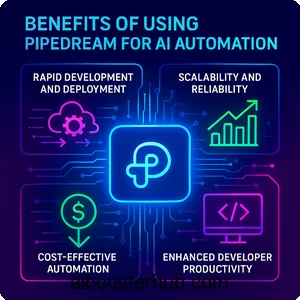
Pipedream offers a host of benefits that make it an attractive choice for developers and businesses working on AI-driven projects. Its combination of ease of use, scalability, and robust features ensures that it delivers significant value. Below are the key benefits of using Pipedream for AI automation.
Rapid development and deployment
Pipedream’s serverless architecture and instant deployment capabilities allow developers to build and deploy workflows quickly. This is especially valuable for AI projects, where rapid prototyping and iteration are often necessary. With Pipedream, you can test AI integrations in minutes and scale them to production without managing infrastructure.
Scalability and reliability
With the ability to process over 10 billion events for more than 1 million developers, Pipedream is built for scale. Its cloud-based infrastructure ensures that workflows remain reliable, even under high loads, making it suitable for enterprise-level AI applications. Whether you’re processing thousands of API calls or handling real-time AI inferences, Pipedream delivers consistent performance.
Cost-effective automation
By eliminating the need for server management and providing pre-built integrations, Pipedream reduces development time and costs. For AI projects, this means you can focus on building intelligent workflows rather than managing infrastructure, making it a cost-effective solution for startups and large enterprises alike.
Enhanced developer productivity
Pipedream’s support for multiple programming languages, access to npm and PyPI packages, and comprehensive documentation enhance developer productivity. AI developers can leverage these tools to write custom logic, integrate external libraries, and access Pipedream’s documentation directly within their IDE, streamlining the development process.
Security and compliance
Pipedream ensures AI application security with SOC 2 Type II, ISO 27001, HIPAA, and GDPR compliance. Its managed authentication handles OAuth and token rotation, ensuring that AI integrations remain secure. This is particularly important for workflows that handle sensitive data, such as customer information or proprietary AI models.
5. How to use Pipedream: A step-by-step guide
Getting started with Pipedream is straightforward, even for those new to workflow automation. This section provides a detailed guide on how to set up and use Pipedream to create AI-driven workflows, complete with practical steps and tips.
Sign up and set up your account
To begin, visit pipedream.com and sign up for a free account. No credit card is required, making it easy to explore the platform’s features. Once registered, you’ll be directed to the Pipedream dashboard, where you can start creating workflows.
Create a new workflow
From the dashboard, click the “+” button to create a new workflow. A workflow is a sequence of steps triggered by an event, such as a webhook, HTTP request, or scheduled task. For AI projects, you might choose a trigger like a new database entry or an incoming API call to initiate your workflow.
Select a trigger
Choose a trigger to start your workflow. Pipedream offers over 1,000 pre-built triggers, including app-based triggers (e.g., new Slack messages) and HTTP/webhook triggers. For example, you could select a webhook trigger to capture data from an external AI model or a scheduled trigger to run an AI script at regular intervals.
Add workflow steps
After selecting a trigger, add steps to your workflow by clicking the “+” button. You can choose from pre-built actions, such as sending a message to Slack, or write custom code in Node.js, Python, Go, or Bash. For AI workflows, you might add a step to call an AI API, process the response, and store the output in a database.
Configure integrations
Pipedream simplifies integration with its one-click OAuth and API key authentication for over 2,500 services. To integrate an AI service like OpenAI, connect your account using Pipedream’s authentication tools, then configure the API call within your workflow. This ensures secure and seamless communication between services.
Test and deploy your workflow
Test workflows with Pipedream’s tools, using detailed logs and debugging to identify issues. Once tested, deploy your workflow, and it will run 24/7 on Pipedream’s servers. Monitor its performance using the dashboard’s observability tools.
Optimize and scale
As your AI project evolves, you can iterate on your workflows by adding new steps, tweaking code, or scaling to handle more events. Pipedream’s serverless architecture ensures that your workflows can scale effortlessly, while its version control features allow you to track changes and collaborate with team members.
6. Why Pipedream is a must-have for AI enthusiasts
Pipedream’s combination of flexibility, scalability, and AI-focused features makes it an indispensable tool for anyone working in artificial intelligence. Its ability to seamlessly integrate AI services with other tools, coupled with its developer-friendly environment, empowers users to create innovative solutions with ease. Below are the key reasons why Pipedream is a must-have for AI enthusiasts.
Empowering innovation with AI integration
Pipedream’s AI Agent Builder and extensive API integrations make it easy to incorporate AI into any workflow. Whether you’re building a chatbot, automating data analysis, or creating AI-driven notifications, Pipedream provides the tools to bring your ideas to life. Its support for custom code ensures that you can implement complex AI logic tailored to your specific needs.
Streamlining development with no-code options
For those who prefer a no-code approach, Pipedream’s pre-built components and intuitive interface make it easy to create AI workflows without writing code. This democratizes AI development, allowing non-technical users to leverage AI tools for tasks like content generation or data processing, while still offering code-level control for advanced users.
Future-proofing your AI projects
As AI technology continues to evolve, Pipedream’s scalable and flexible platform ensures that your workflows remain relevant. With regular updates, a growing library of integrations, and a strong community of developers, Pipedream is well-positioned to support the next generation of AI-driven applications.
Community and support
Pipedream’s vibrant community of over 1 million developers provides a wealth of resources, including tutorials, code snippets, and forums. Additionally, Pipedream’s documentation is optimized for AI tools, allowing you to access API references and code examples directly within your IDE. This community-driven approach ensures that AI enthusiasts have the support they need to succeed.
7. Conclusion
Pipedream is a transformative platform for AI-driven automation, offering unmatched flexibility, scalability, and ease of use. Whether you’re a developer looking to integrate AI into your workflows or a business seeking to streamline operations, Pipedream provides the tools to make it happen. By combining code-level control with no-code options, extensive integrations, and robust observability, Pipedream empowers AI enthusiasts to build innovative, efficient, and secure workflows that drive real-world impact.

